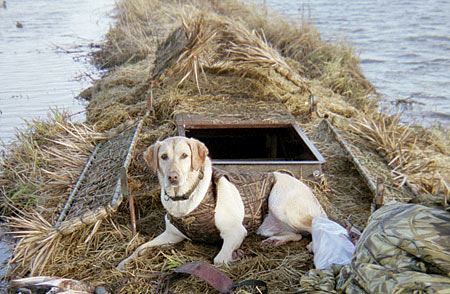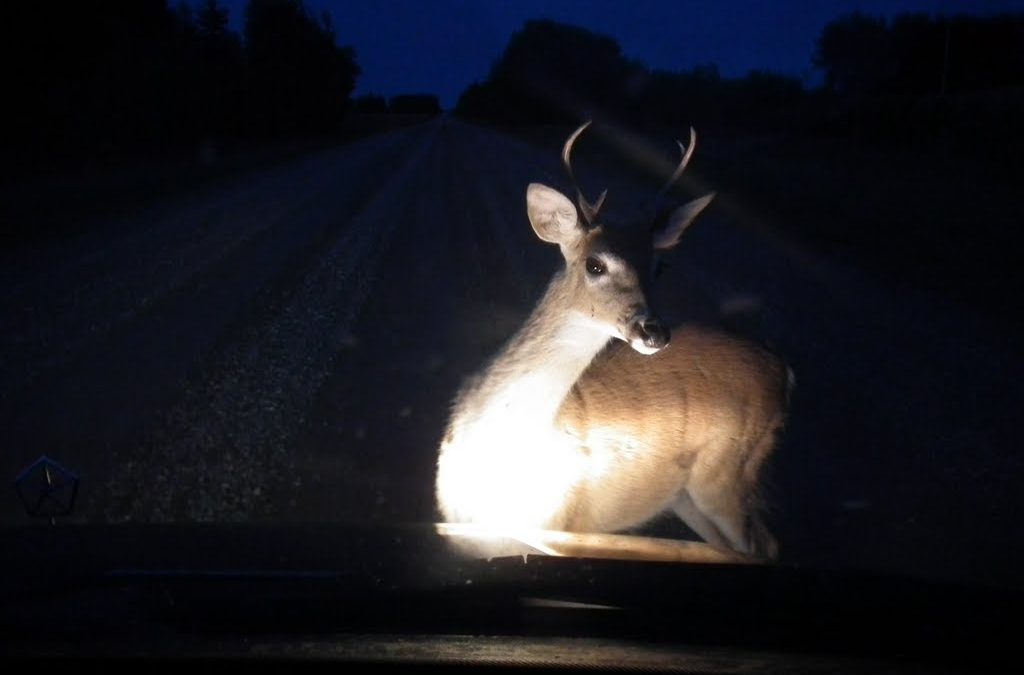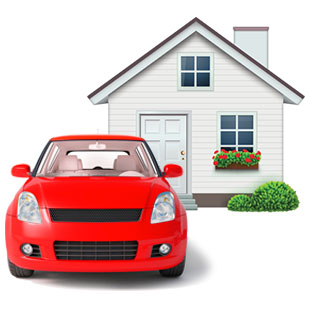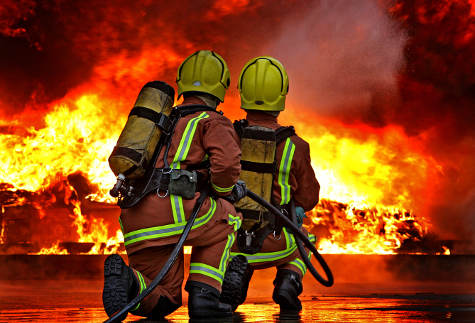
by Flagship Staff | Nov 2, 2015 | Blog

Fall is a nice time of year in the Midwest. Fall sports are back, trees change colors, and after a hot summer, the cooler temperatures feel nice. It’s also the time of year when hunters begin venturing into the woods.
According to the Association of Fish and Wildlife Agencies, more than 87 million Americans hunt, fish, and enjoy wildlife-related recreation annually. Combined, these activities generate more than $120 billion for the U.S. economy and support almost three million jobs.
Whether you’re a gun collector, sport-shooting enthusiast, or hunter, here are some safety tips to keep yourself and others safe.
1. Communication is key.
Whether or not you own a gun, talking to your kids about gun safety is an important discussion. You never know what they may find at a friend’s house.
If you’re hunting with family or friends, discuss the layout of the land and have a thorough understanding of where each person will be.
If you’re venturing into the woods, tell family or friends where you’re going and when you’ll be home.
If visiting your local gun range, understand their rules and abide by them.
2. Store guns and ammunition in separate locked cabinets. Too often, we hear about accidental shootings. What you think is a good hiding spot probably isn’t. Kids are inquisitive and can find things you’d least expect them to find. Store the keys for your gun cabinets in a safe place. Labeling keys for a gun cabinet and leaving them in a common area of your home defeats the purpose of locked cabinets. Consider trigger locks.
3. Wear the appropriate clothing or gear. No matter what hobby you enjoy, wearing the appropriate clothing or gear is important. When shooting, wear eye and ear protection. If you enjoy walking in the woods, make sure you wear bright clothing to make yourself more visible. If you’re hunting from a tree stand, consider a safety harness.
Maintain your gear/hunting equipment properly by inspecting it after each use. If it needs repair, contact a professional.
4. Pack a first aid kit. Create a small kit specifically for you. My dad is allergic to bee stings, so he carried an EpiPen® when he hunted. If you suffer from an occasional migraine and have prescription medicine, pack that, as well.
5. Be aware of your surroundings. Identify where other hunters are and know what your target is before shooting. Find out where local medical services are located.
6. Ask permission. Just because you live near the woods doesn’t mean you can hunt in the woods. Always ask permission from landowners before hunting on their land since it can create many liability exposures for them. If you talk to the landowner beforehand, he/she can keep track of who’s hunting on the land and share any safety tips specific to the property. The last thing you want is a heated confrontation in the woods.
7. Contact your local DNR. Many states require hunter safety courses.

by Flagship Staff | Oct 29, 2015 | Blog
Its Deer Season – Set Your Sights on Safety

According to the National Highway Safety Administration, there are about 1.5 million deer-related auto accidents each year. Most of those occur in October and November, which is mating season for the animals. Deer tend to travel in herds, so if you see one, lookout for more that may follow.
* Keep an eye out for deer signs-they are placed at known deer-crossing areas. Reduce your speed when you see a sign.
* Animals tend to be active during dusk and dawn so be extra-conscious during these times. Stay cautious and watch your speed.
* Make sure your headlights are in working order to ensure you see well at night. Using high beams can help you spot wildlife but be considerate of other drivers when using them.
* Stay focused while driving. Do not text, talk on your phone or allow passengers to distract you.
* Always wear your seat belt. This won’t prevent a collision but it can save your life depending on the severity of the accident.

by Flagship Staff | Oct 19, 2015 | Blog

October is National Cyber Security Awareness month, an effort by the U.S. Department of Homeland Security and the National Cyber Security Alliance that focuses on making your family and community more secure. According to the Pew Research Center, nearly two-thirds of Americans are now smartphone owners and for many, these devices are a key entry point to the online world. At the same time, 62 percent of Americans fear that their smartphone or computer will be hacked. Internet connectivity is actively a part of many consumers day-to-day, personal, and community lives. Nearly 432 million accounts were hacked in 2014 according to the Identity Theft Resource Center – revealing personal information such as names, debit or credit card numbers, emails, birthdays, phone numbers, passwords, security questions and physical addresses.
Take security precautions, understand the consequences of your actions and behaviors and enjoy the benefits of the Internet.
STOP: Before you use the Internet, take time to understand the risks and learn how to spot potential problems.
THINK: Take a moment to be certain the path ahead is clear. Watch for warning signs and consider how your actions online could impact your safety, or your family’s.
CONNECT: Enjoy the Internet with greater confidence, knowing you’ve taken the right steps to safeguard yourself and your computer.
Protect yourself and help keep the web a safer place for everyone.
by Flagship Staff | Oct 12, 2015 | Blog

Did you buy a new car lately? Perhaps you moved into a new home. Or maybe you decided to purchase a boat or a recreation vehicle. Below are some changes that should be reported to your agent.
Autos
Auto coverage for a new or replacement auto can vary. A new car is one you bought in addition to the cars you already own. A replacement car is just that: one you replaced for a vehicle you previously owned.
What coverage you have can depend on whether the car is a new car or a replacement car. It can also depend on what coverage your company provides. Regardless, you need to make the changes to your auto policy within a specified period of time in order for coverage to apply.
The wording in your policy determines what coverage, if any, is automatic and when you need to report the change. Do you have Liability coverage only? Do you need to carry Collision and Other Than Collision coverages on your new auto? Is your car financed through a bank? What coverage do they require? When you talk to your agent, you’ll need to know this information, along with the details of your new car – year, make, model, and serial number. It’s in your best interest to call your agent right away to make any of these changes to your policy. Don’t rely on your car dealer or banker to make changes for you.
Homes
Your homeowner’s policy covers only the dwelling shown on your policy’s declaration page. A new or a replacement home isn’t automatically covered so you must contact your agent with all the required information about your new home, such as:
What is the location/address of your new home?
What year was the home built?
Who’s the responding fire department?
Have any updates been made to the home: roof, furnace, electric?
Does the home have a wood stove?
Once your agent has all the necessary information, he/she should be able to bind coverage for you – either verbally or in writing.
Recreation vehicles
Your homeowner’s policy may also provide you with some limited watercraft coverage like Liability coverage for outboards under 50 horsepower or up to $1,500 physical damage coverage. Your homeowner’s policy may also offer some limited Liability coverage for a snowmobile or four-wheeler, but if you drive such a vehicle on the road or a trail, you’ll need to add more coverage. You don’t have automatic coverage for motorized vehicles.
The bottom line is that you should consult with your insurance agent immediately or very soon after you purchase a new vehicle, home, or recreation vehicle in order to be sure you’re properly protected.

by Flagship Staff | Oct 5, 2015 | Blog
 Did you know that Fire Prevention Week was established to commemorate the Great Chicago Fire? The tragic 1871 fire killed more than 250 people, left 100,000 homeless, destroyed more than 17,400 structures and burned more than 2,000 acres. That all started from just one fire, but in 2014 there were 1,298,000 fires reported in the U.S. These fires caused 3,275 civilian deaths, 15,775 civilian injuries, and $11.6 billion in property damage. In the U.S. in 2014 (on average), a fire department responded to a fire every 24 seconds. One home structure fire was reported every 85 seconds. One civilian fire death occurred every 2 hours and 41 minutes. Today, roughly half of home fire deaths result from fires that start when most people are sleeping. Simply having working fire alarms cuts the chances of dying in a fire in half! It’s recommended that homeowners install smoke alarms in every bedroom, in hallways (especially outside bedrooms), and include every level of a home. Don’t forget areas like basements, attics and utility rooms. Heating equipment malfunction is the second leading cause of home fire deaths. The U.S. Fire Administration offers the following safety tips:
Did you know that Fire Prevention Week was established to commemorate the Great Chicago Fire? The tragic 1871 fire killed more than 250 people, left 100,000 homeless, destroyed more than 17,400 structures and burned more than 2,000 acres. That all started from just one fire, but in 2014 there were 1,298,000 fires reported in the U.S. These fires caused 3,275 civilian deaths, 15,775 civilian injuries, and $11.6 billion in property damage. In the U.S. in 2014 (on average), a fire department responded to a fire every 24 seconds. One home structure fire was reported every 85 seconds. One civilian fire death occurred every 2 hours and 41 minutes. Today, roughly half of home fire deaths result from fires that start when most people are sleeping. Simply having working fire alarms cuts the chances of dying in a fire in half! It’s recommended that homeowners install smoke alarms in every bedroom, in hallways (especially outside bedrooms), and include every level of a home. Don’t forget areas like basements, attics and utility rooms. Heating equipment malfunction is the second leading cause of home fire deaths. The U.S. Fire Administration offers the following safety tips:
1. Maintain heating equipment and chimneys by having them cleaned and inspected annually be a qualified professional.
2. Use heating equipment that has the label of a recognized testing laboratory.
3. All heaters need space (especially space heaters) keep anything that can burn at least three feet away from heating equipment.
4. Plug space heaters directly into outlets and never into an extension cord or power strip.
5. Install and maintain carbon monoxide (CO) alarms inside a home to provide early warning of CO.
6. CHECK YOUR SMOKE ALARMS!









 Did you know that Fire Prevention Week was established to commemorate the Great Chicago Fire? The tragic 1871 fire killed more than 250 people, left 100,000 homeless, destroyed more than 17,400 structures and burned more than 2,000 acres. That all started from just one fire, but in 2014 there were 1,298,000 fires reported in the U.S. These fires caused 3,275 civilian deaths, 15,775 civilian injuries, and $11.6 billion in property damage. In the U.S. in 2014 (on average), a fire department responded to a fire every 24 seconds. One home structure fire was reported every 85 seconds. One civilian fire death occurred every 2 hours and 41 minutes. Today, roughly half of home fire deaths result from fires that start when most people are sleeping. Simply having working fire alarms cuts the chances of dying in a fire in half! It’s recommended that homeowners install smoke alarms in every bedroom, in hallways (especially outside bedrooms), and include every level of a home. Don’t forget areas like basements, attics and utility rooms. Heating equipment malfunction is the second leading cause of home fire deaths. The U.S. Fire Administration offers the following safety tips:
Did you know that Fire Prevention Week was established to commemorate the Great Chicago Fire? The tragic 1871 fire killed more than 250 people, left 100,000 homeless, destroyed more than 17,400 structures and burned more than 2,000 acres. That all started from just one fire, but in 2014 there were 1,298,000 fires reported in the U.S. These fires caused 3,275 civilian deaths, 15,775 civilian injuries, and $11.6 billion in property damage. In the U.S. in 2014 (on average), a fire department responded to a fire every 24 seconds. One home structure fire was reported every 85 seconds. One civilian fire death occurred every 2 hours and 41 minutes. Today, roughly half of home fire deaths result from fires that start when most people are sleeping. Simply having working fire alarms cuts the chances of dying in a fire in half! It’s recommended that homeowners install smoke alarms in every bedroom, in hallways (especially outside bedrooms), and include every level of a home. Don’t forget areas like basements, attics and utility rooms. Heating equipment malfunction is the second leading cause of home fire deaths. The U.S. Fire Administration offers the following safety tips: